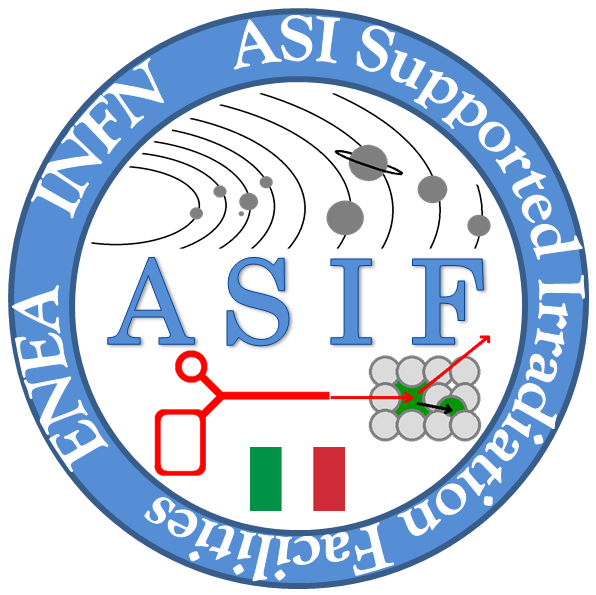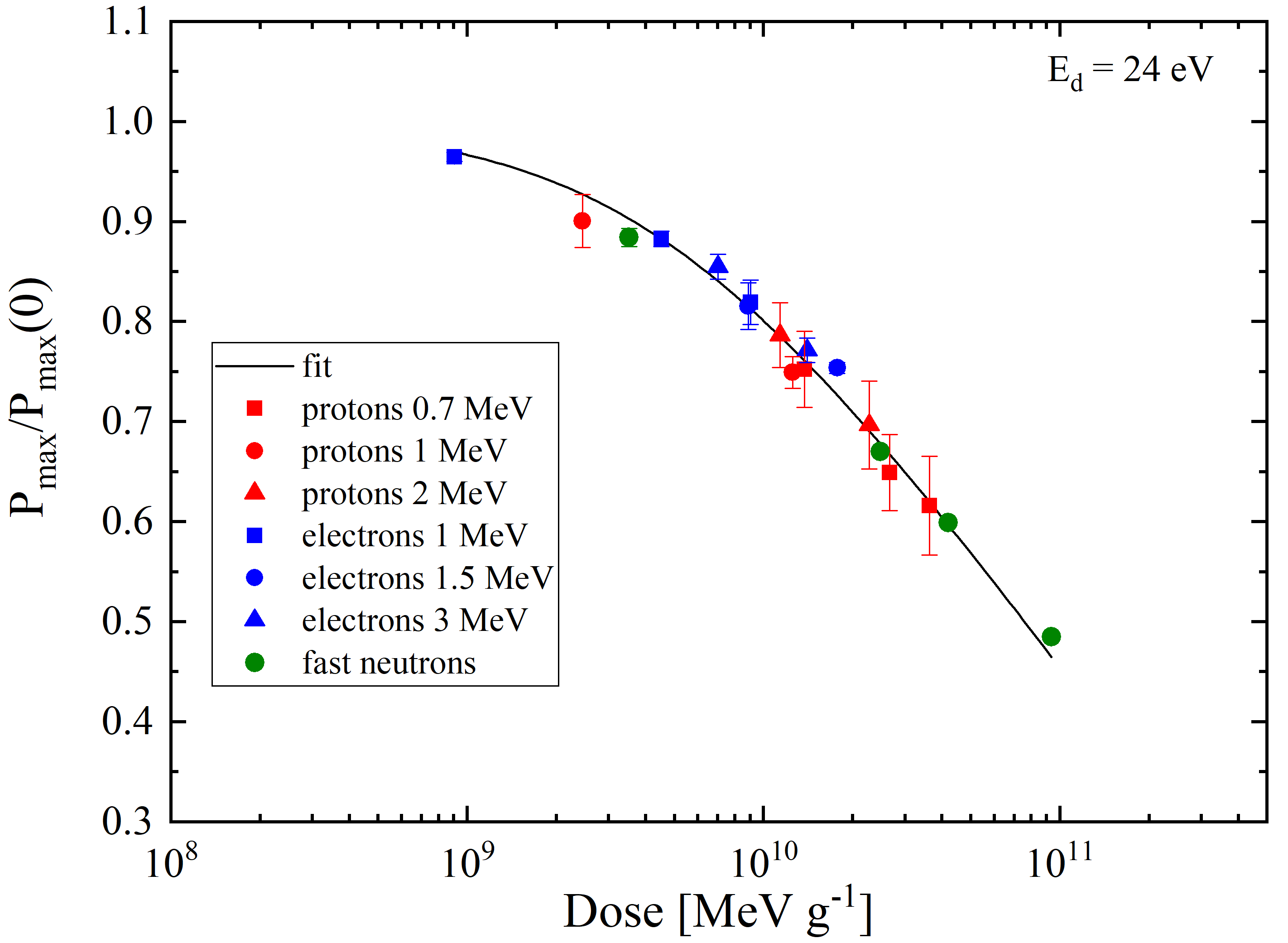- Heavily massive galactic cosmic rays (GCR) can induce radiation damages due, for instance, to their high LET depositions.
- In HelMod-4, it was implemented a forecasting capability for protons and ions fluxes, which will result in a better GCR flux estimation for future space mission [Boschini et al 2017].
- HelMod has demonstrated to be able to reproduce data from inner (i.e. AMS, BESS, PAMELA, Rosetta, SOHO see [Della Torre, 2017]) up to outer heliosphere (i.e. Voyager probes, see [La Vacca, 2018]).
- Local Interstellar Spectra (LISs) used in HelMod are those obtained from the join GalProp - HelMod effort ([Boschini et al 2017b], [Boschini et al 2018]).
- The current HelMod version 4 Model includes the descriptions of the time dependent Heliospheric Boundaries - i.e., the Termination Shock and Heliopause location - and the GCRs propagation through the Heliosheath [Boschini et al 2019].
from [Della Torre (2017)]:

from [La Vacca (2018)]:
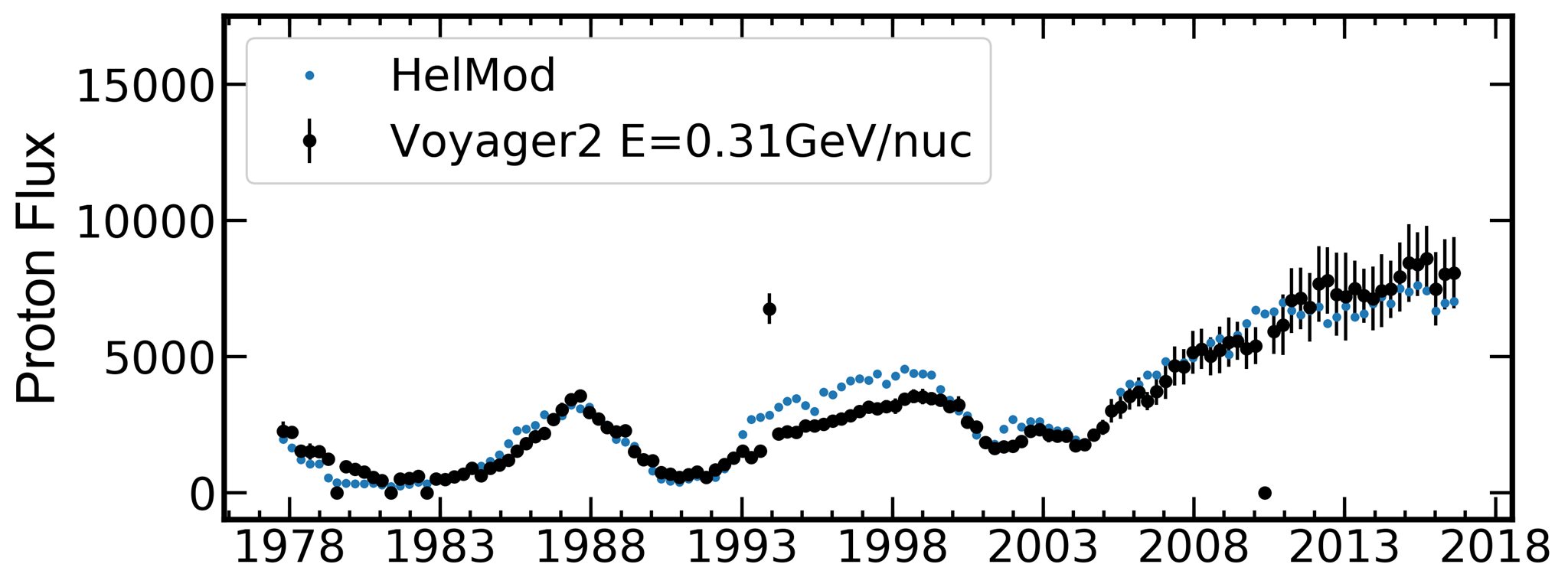
from [Rancoita (2018)]:
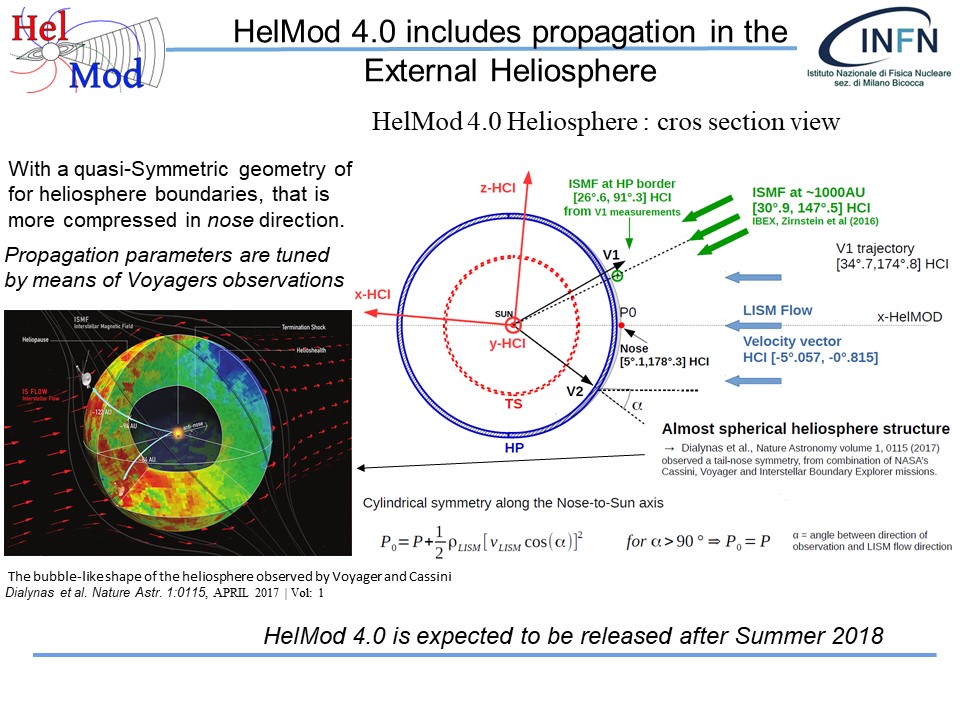
from [Boschini et al 2019]: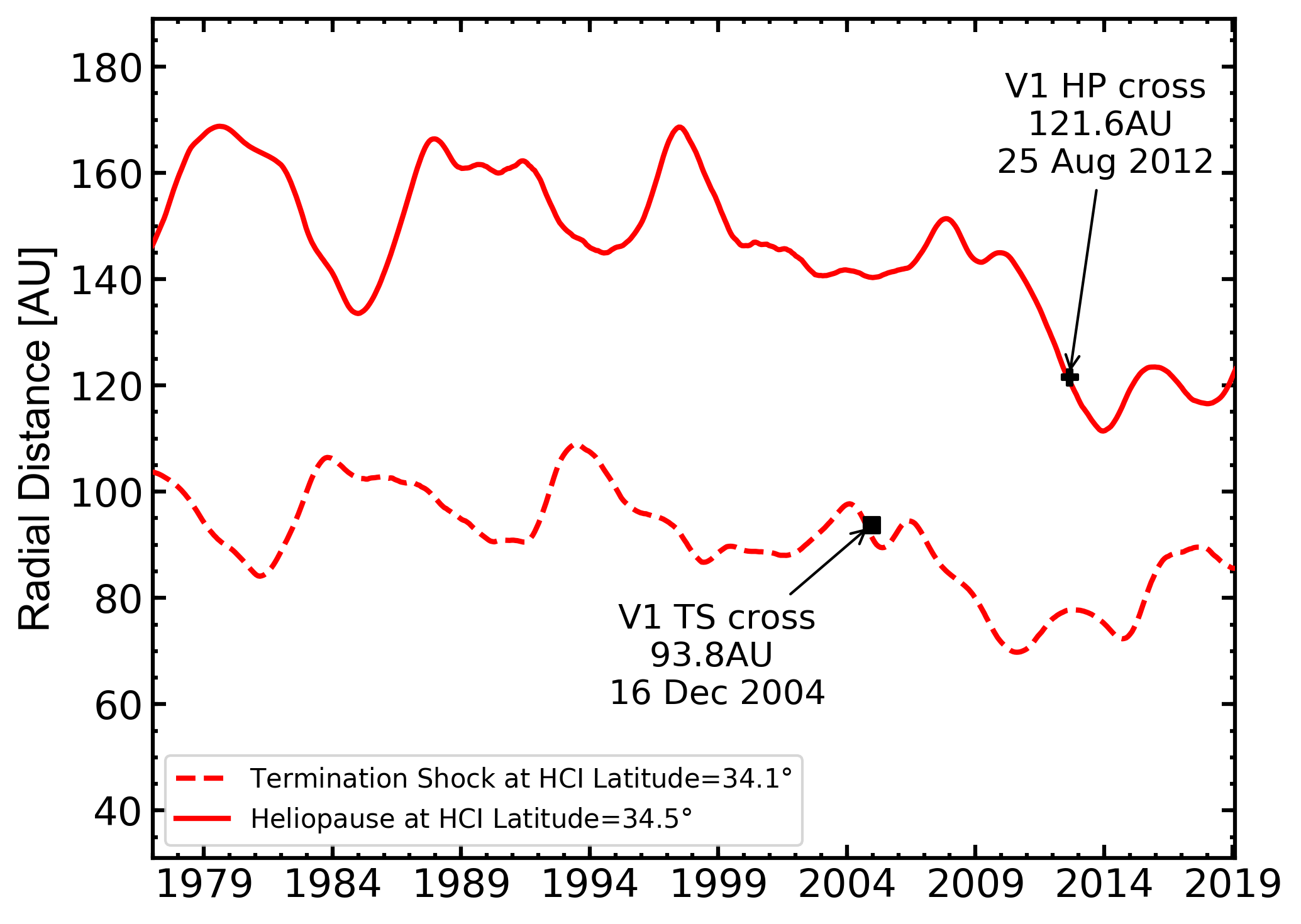 Time variation of monthly averaged position of TS (dashed line) and HP (solid line), calculated from 1977 up to the end of 2018. TS is calculated at HCI-latitude 34.1◦, while HP at HCI-latitude 34.5◦ to match Voyager 1 trajectory. The predicted TS distance at the time of Voyager 1 crossing is 91.8AU. See website.
Time variation of monthly averaged position of TS (dashed line) and HP (solid line), calculated from 1977 up to the end of 2018. TS is calculated at HCI-latitude 34.1◦, while HP at HCI-latitude 34.5◦ to match Voyager 1 trajectory. The predicted TS distance at the time of Voyager 1 crossing is 91.8AU. See website. Time variation of monthly averaged position of TS (dashed line) and HP (solid line), calculated from 1977 up to the end of 2018. TS is calculated at heliolatitude −27.5◦, while HP at heliolatitude −32.2◦ to match trajectory of Voyager 2. The predicted TS distance at the time of Voyager 2 crossing is 86.3AU, while the predicted HP distance at the time of Voyager 2 crossing is 120.7AU. See website.
Time variation of monthly averaged position of TS (dashed line) and HP (solid line), calculated from 1977 up to the end of 2018. TS is calculated at heliolatitude −27.5◦, while HP at heliolatitude −32.2◦ to match trajectory of Voyager 2. The predicted TS distance at the time of Voyager 2 crossing is 86.3AU, while the predicted HP distance at the time of Voyager 2 crossing is 120.7AU. See website.
References
[Boschini et al 2019] M.J. Boschini, S. Della Torre, M. Gervasi, G. La Vacca and P.G. Rancoita, The HelMod Model in the Works for Inner and Outer Heliosphere: from AMS to Voyager Probes Observations, Advances in Space Res 64 (2019), 2459-2476 - https://doi.org/10.1016/j.asr.2019.04.007 -; available also at the website: https://arxiv.org/abs/1903.07501.
[Boschini et al 2018] M J Boschini, Della S Torre, M Gervasi, D Grandi, G Jóhannesson, La G Vacca, N Masi, I V Moskalenko, S Pensotti, T A Porter, L Quadrani, P G Rancoita, D Rozza and M Tacconi, Deciphering the Local Interstellar Spectra of Primary Cosmic-Ray Species with HelMod. The Astrophysical Journal 858(1):61, 2018.
[La Vacca, 2018] G. La Vacca, HelMod model and cosmic ray propagation in the heliosphere, at the 42nd COSPAR Assembly, Pasadena (USA), July 2018.
[Rancoita (2018)] P.G. Rancoita, Screened-Relativistic (SR) Treatment of Displacement Damage and Space Radiation Environment, at IEAP, Prague, 12 June 2018.
[Boschini et al 2017] M. Boschini, S. Della Torre, M. Gervasi, D. Grandi, G. La Vacca, S. Pensotti, P.-G. Rancoita, D. Rozza and M. Tacconi.The HelMod Monte Carlo Model for the Propagation of Cosmic Rays in Heliosphere. Proceedings of the International Astronomical Union, Proceedings of IAU Symposium 335 - Space Weather of the Heliosphere: Processes and Forecasts, July 17-21, 2017, University of Exeter, UK 13(S335):276–279, 2017.
http://dx.doi.org/10.1017/S1743921317007359
[Boschini et al 2017b] M J Boschini, S Della Torre, M Gervasi, D Grandi, G Johannesson, M Kachelriess, G La Vacca, N Masi, I V Moskalenko, E Orlando, S ~S Ostapchenko, S Pensotti, T A Porter, L Quadrani and P G Rancoita, Solution of Heliospheric Propagation: Unveiling the Local Interstellar Spectra of Cosmic Ray Species. Astrophys. J. 840(2):115, 2017.
[Della Torre, 2017] S. Della Torre, HelMod Forecasting of the Intensities of Ion Cosmic Rays, SPACEMON: Space Environment Monitoring Workshop 2017, ESTEC, Noordwijk (NL) December 13–15, 2017, 2017.
